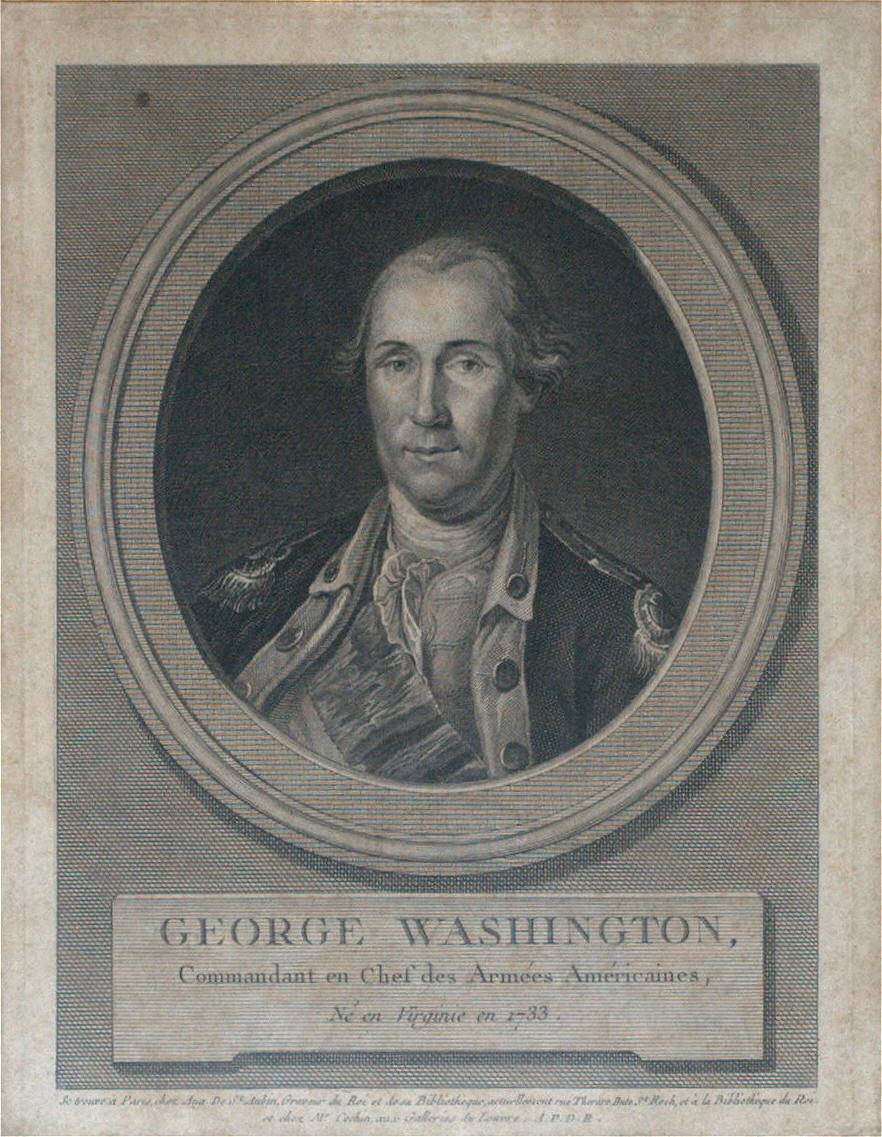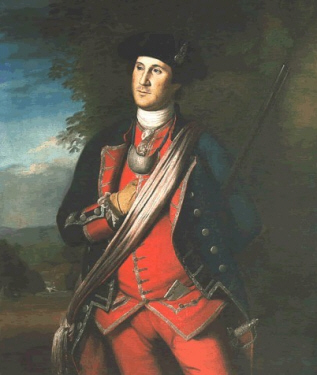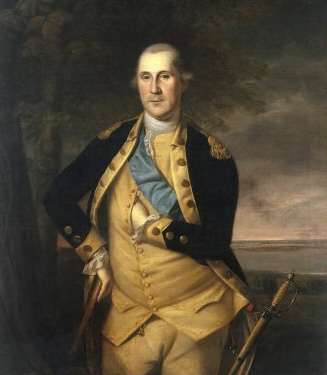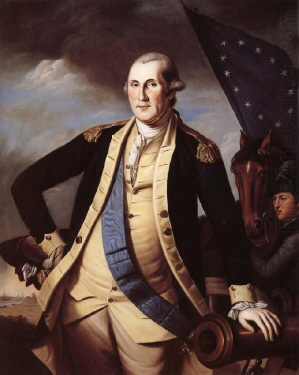
While 18th century
engravings of George Washington are generally very rare,
those produced during the period of the American
Revolution are exceeding rare since they represent some
of the earliest likenesses of George Washington to
circulate among the public. This print is among
the earliest accurate likenesses of Washington printed. The first major American artist to paint George
Washington was Charles Willson Peale, one of the finest
colonial portrait painters of leading figures of the
American Revolution. In all, Peale painted more
than 60 paintings of Washington. Peale painted his first
full scale life portrait of Washington in
1772, prior to the Revolution. The 1772 painting features Washington
in his colonel's uniform from his time in service during
the French and Indian War. Peale's second full
scale portrait, commissioned in 1776 by John Hancock,
President of the Continental Congress, is the basis for
this engraving. Subsequent
paintings of Washington done by Peale contain
variations in his clothing and evidence of a more aged
Washington. In 1779 the Marquis de Lafayette returned to
France with a copy of Peale's 1776 painting of
Washington, one of the first portraits of Washington to
reach Europe. This engraving was made in Paris, France
from Lafayette's portrait.
The engraver, Augustin
de Saint-Aubin, was an engraver to King Louis XVI of
France, and printer Charles-Nicolas Cochin was the royal
printer, artist and keeper of the royal library at the
Louvre. Although this particular engraving is not
dated, an engraving of Benjamin Franklin (IAS-00421) of near
identical form and style, also by Saint-Aubin and
Cochin, is dated 1777. Both prints have an
identical oval medallion, an identical notched name
plate, identical but mirrored shadows on the medallion
and name plate, identical size, and nearly identical
attribution text at the bottom of the plate. The two
prints are likely to have been been made as a matched pair, presented to King Louis XVI
and his court, and sold in Paris to Parisians eager to
see what these two famous Americans, champions of
liberty in the face of British tyranny, looked like.
As royal printers to the king, Saint-Aubin and Cochin
would have strived to produce the most accurate and up
to date likenesses of Washington and Franklin. They
undoubtedly had access to the 1776 painting that the
Marquis de Lafayette brought to France in 1779, from
which they produced this engraving. Thus although not
explicitly dated, the attribution circa 1780 is
accurate, and the print survives as one of the earliest Washington engravings--one which was produced at the height of the American
Revolution. Searches for this print in the collections
of the Smithsonian National Portrait Gallery, the New
York Public Library and other major institutional
collections have not located any other examples of the
type.
 |
 |
 |
|
George Washington, 1772 |
George Washington, 1776 |
George Washington at Princeton, 1779 |
One can see, from the portraits above that the
engraving is clearly based off of Peale's second
full bodied portrait George Washington from
1776, and not from the later portrait George
Washington at Princeton from 1779. Note
especially the buttons along the edges of
Washington's coat, the more youthful appearance
of his face, and the positioning of the sash
cross his chest. It's possible that this engraving
of Washington even
pre-dates Peale's own first Mezzotint of
Washington which dates to 1780 and was based upon his
1779 painting of Washington. |
|

